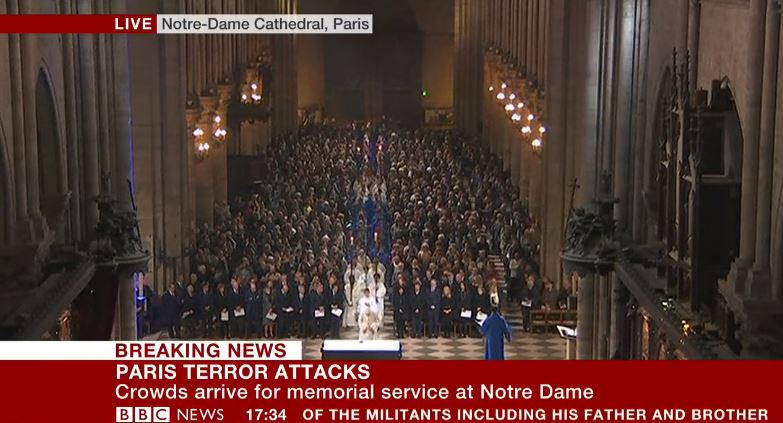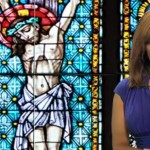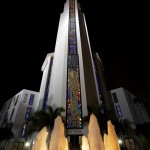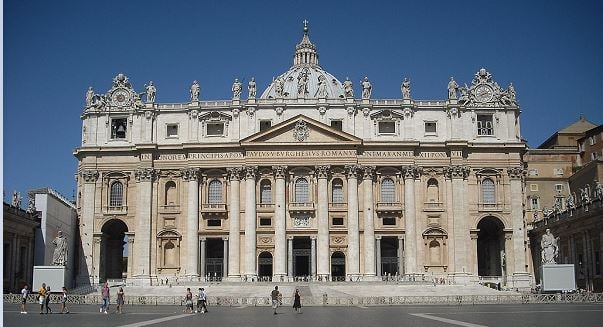So we were walking around Rome… trudging, actually… for what seemed like hours. And miles. Or kilometers, I suppose, since we were in Rome.
Anyway, we wandered toward Campus Martius, past gelato stands and trattorias and open markets, past offices and apartments, surrounded by pedestrians and taxis and Vespas, and then…. there on our right, standing in the middle of a bustling city block, was a church. (Click on this and other images to see the fine details.)
It was Sant’Ignazio, a Baroque style church dedicated to St. Ignatius, founder of the Jesuits. Its doors were open and people streamed in and out. We were hot, we were tired… and in we went.
And there, the most amazing thing! People were walking around, slowly looking at this:
And here’s where my guided tour falls short: I’m not sure whether the churches carved side by side around the dome were Jesuit churches from around the world, or Roman churches that might be found around the city.
* * * * *
The massive church of St. Ignatius of Loyola was begun in 1626, but wasn’t finished until near the end of the century. It’s designed in the form of a Latin cross, with numerous side chapels–probably because priests in its monastery would celebrate private masses. (In the days prior to the Second Vatican Council, concelebration in the Roman Rite was permitted only at the ordination of a priest or the consecration of a bishop. Otherwise, masses were celebrated by a single priest.)
And the church was truly beautiful–with its richly ornamented high altar, colored marble pillars and ornamentation, and extensive gilding.
And–most surprising of all–a trompe l’oeil tall, ribbed and coffered “dome” painted on the flat ceiling.
The “dome” is deceptive because there is no towering dome with light streaming in, as there is in St. Peter’s Basilica. In reality, but for the elaborate painting, the ceiling is flat and unimaginative.

November 1642
A Jesuit lay brother, Brother Andrea Pozzo, was the 17th century artist who painted the grandiose fresco that stretches across the ceiling in the nave. In the fresco, St. Ignatius is welcomed into paradise by Christ and the Virgin Mary, surrounded by allegorical representations of the four continents. Brother Pozzo used perspective to create the illusion of a huge and lofty cupola, open to the bright sky, and filled with figures floating heavenward. In the middle of the floor below, a marble disk marked the spot where observers should stand to fully experience the illusion.
The planned cupola was never built; and in its stead, Brother Pozzo painted a faux cupola on canvas, which was then glued to the ceiling. When a fire destroyed the painting in 1891, it was replaced with a copy of the original.
Four Old Testament figures–Judity, David, Samson and Jaele–are depicted in frescoes in the crossing.
* * * * *
Sant’Ignazio is only one of many beautiful churches in the Eternal City. For us, stumbling upon this great beauty unawares was a special treat on a hot afternoon.














